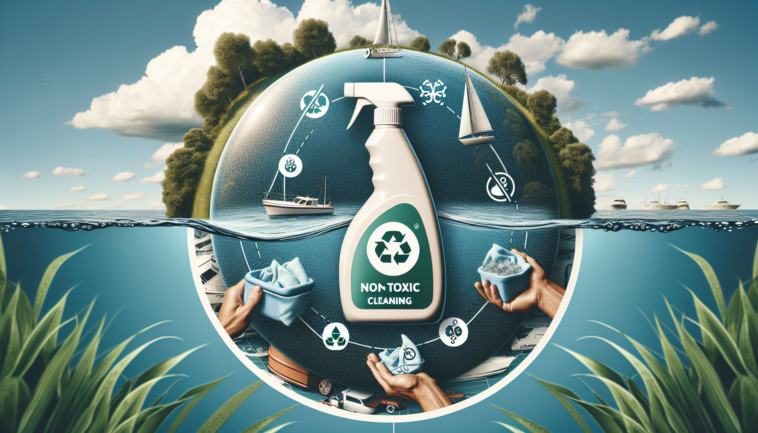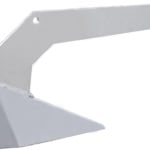Are you someone who enjoys boating? If so, it’s important to consider the impacts that boating can have on environmentally sensitive areas. From damaging delicate ecosystems to polluting water sources, reckless boating practices can have long-lasting consequences. In order to minimize these impacts, it is crucial to take certain measures when boating in environmentally sensitive areas. By adhering to guidelines such as avoiding sensitive habitats, using eco-friendly cleaning products, and properly disposing of waste, boaters can ensure that their love for the water doesn’t come at the expense of our fragile ecosystems.
Boating Regulations and Permits
Understanding and following boating regulations
When it comes to boating in environmentally sensitive areas, it is crucial to understand and follow boating regulations. These regulations are put in place to protect the delicate ecosystems and wildlife in these areas. By familiarizing yourself with the local regulations, you can ensure that you are boating responsibly and minimizing your impact on the environment.
Boating regulations may include speed limits, no-wake zones, restricted areas, and guidelines for waste disposal. It is important to pay attention to signage and markers indicating these regulations and adhere to them. By doing so, you can avoid causing harm to the marine environment and minimize disturbances to wildlife habitats.
Obtaining necessary permits
Along with understanding and following boating regulations, obtaining necessary permits is another important aspect of boating in environmentally sensitive areas. Permits are typically required for activities such as fishing, anchoring, and entering marine parks or protected areas. These permits help regulate the number of boats in the area and ensure that activities are carried out in an environmentally sustainable manner.
To obtain the necessary permits, you may need to contact local authorities or park authorities. They will provide you with information on the specific permits required and any associated fees. It is essential to obtain these permits before entering environmentally sensitive areas to avoid fines or penalties.
Marine park restrictions
Many environmentally sensitive areas are designated as marine parks or protected areas to preserve their natural beauty and ecological significance. These marine parks often have specific restrictions in place to protect the marine life and habitats within them. It is essential to familiarize yourself with these restrictions and abide by them while boating in these areas.
Marine park restrictions may include no fishing zones, designated anchoring areas, and restricted access to certain areas. The purpose of these restrictions is to minimize disturbance to marine ecosystems and allow them to thrive undisturbed. By respecting these restrictions, you can contribute to the conservation efforts and help maintain the biodiversity of these areas.
Eco-friendly Boating Practices
Use of non-toxic and biodegradable cleaning products
One of the ways boaters can minimize their environmental impact is by using non-toxic and biodegradable cleaning products. Traditional cleaning products often contain chemicals that can be harmful to marine life and ecosystems when washed off into the water. By opting for non-toxic alternatives, you can ensure that your cleaning practices are not contributing to water pollution.
There are many eco-friendly cleaning products available on the market specifically designed for boating purposes. These products are made from natural ingredients that are less harmful to the environment. When cleaning your boat, be sure to follow the manufacturer’s instructions and dispose of any wastewater responsibly.
Proper waste disposal
Proper waste disposal is crucial for maintaining the cleanliness and environmental health of our waterways. When boating in environmentally sensitive areas, it is essential to dispose of waste responsibly to prevent pollution and protect wildlife. This includes disposing of trash, food waste, and recyclables in designated receptacles or taking them back to shore for proper disposal.
Additionally, it is important to be mindful of sewage and bilge discharge. Some areas may have specific regulations regarding sewage disposal, and it is essential to follow them to prevent contamination of the water. Properly maintaining and regularly emptying your boat’s holding tanks is vital in preventing sewage discharge into environmentally sensitive waters.
Avoiding harm to marine life
Protecting marine life should be a top priority when boating in environmentally sensitive areas. One of the simplest ways to avoid harm to marine life is by avoiding excessive speed and sudden acceleration. Fast-moving boats and sudden changes in speed can cause disturbances and stress to marine animals, especially those that rely on sound for communication and navigation.
To minimize your impact on marine life, be aware of designated quiet zones and respect them. These areas are often marked with buoys and signs and should be strictly adhered to. By reducing noise pollution from your boat, you can create a more peaceful environment for marine animals and minimize the risk of collisions.
Noise Control Measures
Using quieter engines and exhaust systems
One of the main contributors to noise pollution from boats is the engine and exhaust system. To reduce your boat’s noise emissions, consider using quieter engines and exhaust systems. Modern technologies have made significant advancements in reducing noise levels, so it is worth investigating quieter options when purchasing or upgrading your boat.
Quiet engines and exhaust systems not only benefit marine life but also enhance your boating experience. They provide a more serene and enjoyable environment for both you and other boaters, and they are often more fuel-efficient as well.
Avoiding excessive speed and sudden acceleration
Excessive speed and sudden acceleration not only disturb marine life but can also pose safety risks for both boaters and other water users. It is important to operate your boat at safe and appropriate speeds, especially in environmentally sensitive areas. This allows you to maintain control of your vessel and react to any unexpected situations that may arise.
By avoiding excessive speed and sudden acceleration, you can reduce noise levels and minimize your boat’s wake, which can cause erosion and damage to shorelines. It also gives marine animals more time to detect and avoid your vessel, reducing the risk of collisions.
Respecting quiet zones
Many water bodies have designated quiet zones, which are areas where boaters are required to reduce their noise emissions and maintain a slow speed. These quiet zones are often established to protect wildlife habitats, especially those that are sensitive to noise disturbances. It is crucial to respect these quiet zones and operate your boat in a manner that minimizes noise pollution.
Quiet zones are typically marked with buoys or signage, and it is essential to pay attention to these markers and adhere to their regulations. By respecting quiet zones, you can help preserve the tranquility of the area and minimize your impact on the environment.
Fuel Management
Regular engine maintenance
Regular engine maintenance is essential for optimal performance and fuel efficiency. By properly maintaining your boat’s engine, you can minimize fuel consumption and reduce your carbon footprint. Regularly check and replace air filters, fuel filters, and spark plugs as needed. Ensure that your engine is properly tuned and operating at its best.
Additionally, it is important to follow manufacturer guidelines for engine maintenance, including oil changes and lubrication. Regularly inspecting and maintaining your boat’s engine can identify and address any potential issues before they become major problems, saving you both time and money in the long run.
Minimizing fuel spillage and leakage
Fuel spillage and leakage can have significant environmental consequences, contaminating water sources and harming marine life. To minimize the risk of fuel spills, it is important to handle fuel with caution and follow best practices for refueling. Use spill-proof fuel containers and avoid overfilling to prevent spills during the refueling process.
Regularly inspect your fuel lines, connections, and tanks for leaks or damage. If any issues are identified, they should be addressed immediately to prevent further fuel leakage. It is also important to have absorbent materials, such as oil-absorbent pads or booms, on board to quickly contain and clean up any small spills that may occur.
Utilizing fuel-efficient technologies
Advancements in technology have introduced fuel-efficient options for boaters. Consider upgrading to more fuel-efficient engines, such as four-stroke outboard motors, which consume less fuel and produce fewer emissions compared to their two-stroke counterparts. Additionally, propeller technology has also improved, allowing for greater fuel efficiency.
Other fuel-saving measures include optimizing your boat’s trim and weight distribution to reduce drag and improve fuel efficiency. Minimizing unnecessary weight on board and using on-board monitoring systems to track fuel consumption can further help you manage and reduce your fuel usage. By embracing fuel-efficient technologies and practices, you can enjoy longer trips while minimizing your environmental impact.
Avoiding Damage to Aquatic Vegetation
Navigating with caution in shallow areas
Navigating in shallow areas, particularly those with submerged vegetation, requires extra caution to avoid damaging aquatic vegetation. Shallow areas are often home to critical habitats for various species, and damaging or uprooting vegetation can disrupt the ecosystem. When navigating in such areas, it is crucial to operate at a slow speed and stay within marked channels or designated areas.
By staying within designated channels, you can help protect the vegetation and minimize accidental damage. Familiarize yourself with the specific navigation guidelines for the area you are boating in and adhere to them to ensure the preservation of aquatic vegetation.
Avoiding propeller strikes
Propeller strikes can cause significant damage to underwater vegetation, disturbing ecosystems and hindering the growth and reproduction of plant species. To avoid propeller strikes, be aware of the water depth and vegetation in your surroundings. If possible, navigate in areas with clear water, where it is easier to identify and avoid submerged vegetation.
Additionally, keeping a safe distance from shorelines and maintaining a slow speed can also reduce the risk of propeller strikes. Investing in propeller guards or choosing boats with shallower drafts can further minimize the potential for damage to aquatic vegetation.
Using designated channels or markers
To protect aquatic vegetation, many water bodies have designated channels or markers that indicate safe navigation paths. These channels are often deeper and clear of vegetation to minimize the risk of damage. It is important to familiarize yourself with these channels and markers before boating in environmentally sensitive areas.
By using designated channels or following the markers, you can navigate without disturbing or damaging aquatic vegetation. Respect the purpose of the markers and avoid deviating from the designated paths, even if it may seem more convenient. By doing so, you can contribute to the preservation of delicate underwater ecosystems.
Preventing Water Pollution
Reducing the use of harmful chemicals on boats
Many cleaning and maintenance products used on boats contain harmful chemicals that can pollute the water when rinsed off. When boating in environmentally sensitive areas, it is crucial to reduce the use of such chemicals and opt for environmentally friendly alternatives.
Consider using biodegradable and non-toxic cleaning products specifically designed for boating. These products are less harmful to the aquatic environment and still ensure that your boat is clean and well-maintained. By making the switch to eco-friendly products, you can minimize water pollution and protect the health of marine ecosystems.
Properly disposing of oil and fuel
Improper disposal of oil and fuel can have severe consequences for water quality and marine life. It is crucial to follow proper disposal procedures for oil and fuel to prevent contamination. Avoid disposing of oil or fuel into the water and never dump them on land or in the trash.
Instead, collect used oil and fuel in appropriate containers and dispose of them at designated collection points or recycling facilities. Many marinas and boatyards have oil and fuel disposal stations, where you can safely and responsibly dispose of these hazardous materials. By properly disposing of oil and fuel, you can help prevent water pollution and protect the marine environment.
Preventing sewage and bilge discharge
Discharging sewage or bilge waste directly into the water is not only illegal in many areas but also poses a serious threat to water quality and marine life. It is essential to prevent sewage and bilge discharge by using adequate waste management systems on board.
Ensure that your boat has a properly installed and regularly maintained holding tank for sewage, and never discharge sewage in environmentally sensitive areas. Similarly, bilge water should be collected and properly disposed of at designated pump-out facilities, where available. By preventing sewage and bilge discharge, you can help maintain the cleanliness and integrity of our waterways.
Educational Initiatives
Offering boater education programs
Educating boaters about the importance of environmental sensitivity and responsible boating practices is key to promoting sustainable boating. Offering boater education programs can help raise awareness about the potential impacts of boating on the environment and provide boaters with the knowledge and skills they need to minimize their impact.
Boater education programs can cover topics such as navigation rules, environmental regulations, waste management, and ways to minimize disturbances to marine life. These programs can be offered by local authorities, environmental organizations, or boating associations. By participating in these programs, boaters can learn how to be more environmentally conscious and responsible in their boating practices.
Raising awareness about environmental sensitivity
Raising awareness about environmental sensitivity among boaters and the wider community is crucial for fostering a culture of responsible boating. By promoting the importance of protecting the environment and the need for sustainable boating practices, we can encourage boaters to take active steps to minimize their environmental impact.
Organize events, workshops, or campaigns that highlight the fragility of marine ecosystems and the role that boaters can play in their conservation. Use various communication channels, such as social media, signage, and educational materials, to spread the message and encourage responsible boating practices. By raising awareness about environmental sensitivity, we can inspire positive change and create a community of environmentally conscious boaters.
Promoting responsible boating practices
In addition to education and awareness, it is important to actively promote responsible boating practices. This can be done through the dissemination of guidelines, brochures, and handouts that outline best practices for boating in environmentally sensitive areas. Provide boaters with practical tips and recommendations to minimize their impact on the environment.
Collaborate with local authorities, environmental organizations, and boating industry professionals to develop and distribute these resources. By promoting responsible boating practices, we can ensure that boaters are equipped with the knowledge and tools to protect the environment while enjoying their boating experiences.
Monitoring and Enforcement
Implementing regular patrols and inspections
To ensure compliance with boating regulations and environmental protection measures, regular patrols and inspections should be implemented. Local authorities, park rangers, or designated enforcement personnel can conduct these patrols to monitor boating activities and address any violations that may arise.
By having a visible presence on the water, authorities can deter irresponsible boating behavior and ensure boaters abide by the regulations. Regular patrols and inspections also help identify areas that may require additional protection measures or increased enforcement efforts to mitigate potential environmental damage.
Enforcing fines and penalties for violations
To maintain the integrity of boating regulations and protect environmentally sensitive areas, fines and penalties should be enforced for violations. Penalties can range from monetary fines to temporary boating suspensions, depending on the severity and frequency of the violation.
By enforcing fines and penalties, authorities send a clear message that irresponsible boating practices will not be tolerated. This serves as a deterrent for potential violators and encourages boaters to comply with regulations and adopt responsible boating practices.
Collaborating with environmental organizations
Collaboration with environmental organizations can be instrumental in monitoring and protecting environmentally sensitive areas. By partnering with these organizations, local authorities can benefit from their expertise and resources in conducting ecological assessments, monitoring water quality, and identifying areas of concern.
Environmental organizations can also assist in raising public awareness about the importance of preserving these areas and the need for responsible boating practices. Collaborative efforts can include joint patrols, educational campaigns, and initiatives aimed at preserving and restoring the natural habitats and biodiversity in environmentally sensitive areas.
Establishing No-wake Zones
Identifying areas where high-speed boating must be restricted
No-wake zones are established in areas where high-speed boating can cause significant damage to the environment or pose safety risks. These zones are often designated in areas with sensitive habitats, marinas, or areas with high boating traffic. Identifying these areas where high-speed boating should be restricted is essential for protecting natural habitats and maintaining safety on the water.
By mapping out these no-wake zones, local authorities can inform boaters of the restrictions and ensure compliance. Signs, buoys, or markers should be installed to clearly indicate the boundaries of the no-wake zones and help boaters navigate safely.
Installing signage and markers
To effectively communicate the presence of no-wake zones, installing signage and markers is crucial. These visual cues alert boaters to reduce their speed and maintain a wake-free condition in designated areas.
Signage should be placed at entrance points to no-wake zones, on relevant buoys, or near high-traffic areas to ensure maximum visibility. Clear and concise instructions should be displayed to inform boaters of the restrictions and the rationale behind them. By providing clear signage and markers, boaters can easily recognize and comply with the regulations.
Enforcing regulations to maintain slow speeds
Enforcement of regulations is essential to maintain slow speeds in designated no-wake zones. Local authorities can conduct regular patrols and monitor boating activities within these zones to ensure compliance. Violators should be subject to fines or penalties to discourage high-speed boating and reinforce the importance of maintaining a wake-free condition.
By enforcing regulations and maintaining slow speeds in no-wake zones, authorities can safeguard the environment, protect sensitive habitats, and enhance safety on the water. Continued monitoring and enforcement efforts are essential to maintain the effectiveness of these regulations.
Collaboration with Stakeholders
Engaging with local communities and residents
Engaging with local communities and residents is vital for effective management and protection of environmentally sensitive areas. By involving these stakeholders, you can gather valuable insights, address concerns, and foster a sense of ownership and responsibility for the preservation of these areas.
Hold public meetings, forums, or workshops to provide opportunities for dialogue and collaboration. Seek input from local residents, boaters, fishermen, and businesses to ensure that management strategies are inclusive and consider various perspectives. By engaging with local communities, you can foster a sense of environmental stewardship and create a support network for sustainable boating practices.
Involving environmental experts and organizations
Environmental experts and organizations can provide valuable expertise and guidance in the management of environmentally sensitive areas. Collaborate with these experts to develop scientifically sound management plans, conduct research, and identify priority areas for protection.
By involving environmental experts and organizations, you can benefit from their knowledge of ecosystems, species, and ecological processes. They can help inform management decisions, assess the effectiveness of conservation measures, and provide guidance on sustainable boating practices. Establishing partnerships with these entities ensures a holistic approach to the protection of environmentally sensitive areas.
Seeking input from boating industry professionals
Boating industry professionals play a crucial role in promoting responsible boating practices and reducing the environmental impact of boating activities. Seek input and collaboration from boat manufacturers, marina operators, boat dealers, and other industry professionals to develop and implement sustainable boating initiatives.
Industry professionals can provide valuable insights into technological advancements, best practices, and innovations that can minimize the environmental footprint of boating. By considering their expertise and involving them in decision-making processes, we can ensure that the boating industry actively contributes to the protection of environmentally sensitive areas.
In conclusion, boating in environmentally sensitive areas requires a comprehensive approach that encompasses understanding and following boating regulations, adopting eco-friendly practices, implementing noise control measures, managing fuel consumption, avoiding damage to aquatic vegetation, preventing water pollution, conducting educational initiatives, monitoring and enforcing regulations, establishing no-wake zones, and collaborating with stakeholders. By embracing these measures, boaters can enjoy their recreational activities while minimizing their impact on the environment and contributing to the preservation of our precious natural resources.





